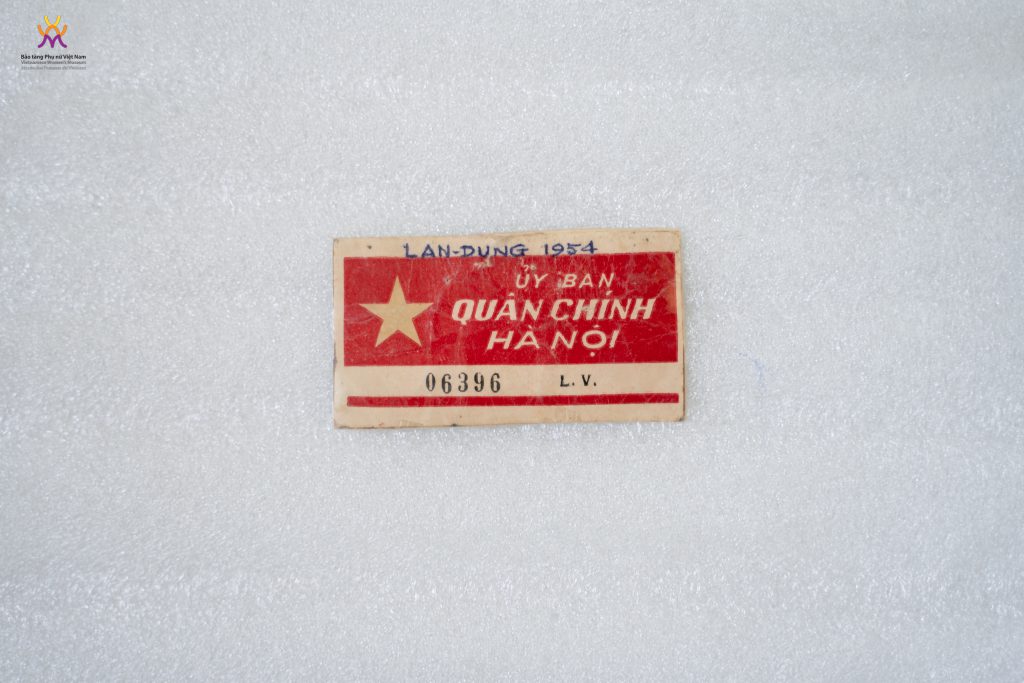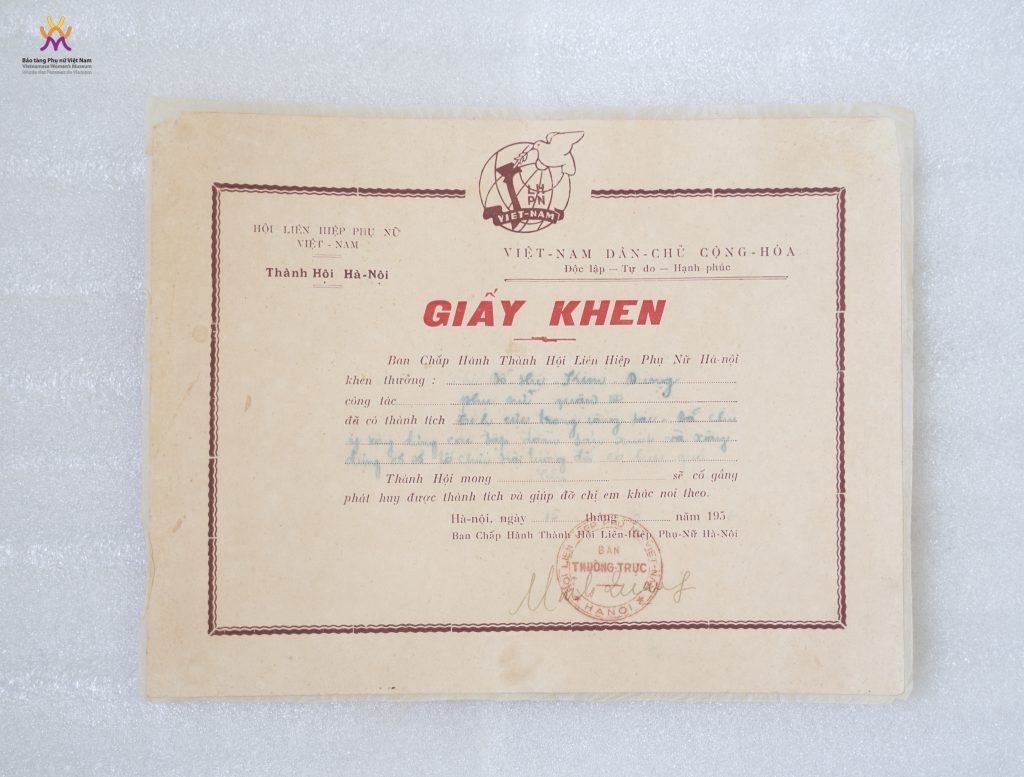Memories of Hanoi in That October
Though 70 years have passed, October 10, 1954, remains an unforgettable historic moment for many generations of Vietnamese, especially for the people of Hanoi. It marks a significant turning point in the history of the city’s and the country’s development, ushering in a new era where the working people could take control of their destiny and enthusiastically embark on building a new socialist life. For Mrs. Đỗ Thị Kim Dung, a former official of the Hanoi Women’s Union, this day carries even deeper significance. It stands as a lasting memory of her youthful passion and contributions to the historic event of Hanoi’s Liberation Day. The Vietnam Women’s Museum is honored to share the mementos and stories of Mrs. Đỗ Thị Kim Dung, a historical witness who actively participated in this pivotal national event 70 years ago.
An internal city official
Mrs. Đỗ Thị Kim Dung, commonly known as Hoàng Lan Dung, also held the aliases Hoàng Lan, Minh Ngọc, and Lê Minh Tuyên. She was born on December 4, 1934, in Thạch Khôi village (now Hàng Than Street, Nguyễn Trung Trực Ward, Ba Đình District, Hanoi). Despite being raised in a middle-class family, Mrs. Dung’s revolutionary awareness emerged at an early age. She joined the Children’s National Salvation Organization in Hàng Than Street at just 11 years old. At the age of 13, she became a member of the Youth Buddhist Association, where she promoted charitable work, distributed anti-enemy leaflets, and sold government resistance bonds at temples like Hòe Nhai, Bà Đá, and Chân Tiên.
Due to her outstanding achievements, she was honored to join the Party at the age of 16. At the end of 1950, the Urban Military Commission sent her to a free zone to study at Lê Hồng Phong Party School’s 16th course. In March 1951, she was assigned to work as a women’s affairs officer in the Mỹ Đức District Committee of Hà Tây. By October 1951, the Hanoi City Committee called her back to the capital. From February 1952, she was openly active in various public organizations in the city: Đức Hợp Domestic School, Chí Linh Culture School, Bắc Hà Women’s Association, Hưng Ký, Diệu Nam, and Tuệ Linh. Her mission was to mobilize the youth, intellectuals, and masses to resist conscription and not cooperate with the enemy while supporting the resistance…
The Days Leading Up to the Takeover of the Capital
To safely and meticulously prepare for the celebrations, parades, and rallies to welcome the Party and Government’s return to Hanoi, the Hanoi City Committee instructed district committees to ensure all city officials were actively preparing for the event.
In August 1954, the Military Commission instructed Mrs. Dung to mobilize active public figures, including civil servants, intellectuals, and small businesswomen, to attend a political training course in Vân Đình, Hanoi’s outskirts.These individuals were to be the ones who would later help spread the policies of the Resistance Committee and the Government to the citizens of the capital. They were also meant to inspire patriotism among the people, aiding the Government in protecting public property and facilities that the French had attempted to sabotage before their withdrawal.
After completing the training, she returned to work at the Hanoi Women’s Union, joining her fellow members in preparing for the day the Government returned to take over the capital. Their tasks included making banners, slogans for rallies, and mobilizing women to participate in the parades alongside other public groups to showcase the strength of the liberation forces.
Coming from a middle-class family and being a native of Hanoi, Mrs. Dung had a deep understanding of the lifestyles and habits of women in the city. She was thus assigned the task of sharing these insights with Central Women’s Union officials to improve the effectiveness of their propaganda efforts. Her role was crucial in encouraging women to participate in the rallies and parades, as well as in spreading the Government’s policies to the masses ahead of the takeover.
Thanks to thorough preparation, the rallies and parades celebrating the Party and Government’s return to Hanoi were carried out in a safe and orderly manner. Over 10,000 women were mobilized to participate in these events alongside other governmental and public organizations. Mrs. Dung was praised as one of the most outstanding organizers within the Hanoi Women’s Union, ensuring that the women’s procession was orderly and dispersed safely. In recognition of her efforts, she was awarded a certificate of merit by the Executive Committee of the Hanoi Women’s Union during a review conference evaluating the preparations for the takeover.
The historical artifacts
Memories of this historic time are not only found in stories and recollections; Mrs. Đỗ Thị Kim Dung also preserved several artifacts that have become sacred mementos. The Vietnam Women’s Museum proudly presents a few of these items, which are tied to her role in that glorious period.
The Hanoi Military Commission Badge

This badge was issued by Major General Vương Thừa Vũ, Chairman of the Hanoi Military Commission, to city officials and members of public organizations during the takeover of the capital.
She wore it during her participation with the Women’s Union, alongside the Military Commission and 308th Infantry Division, as they took over Hanoi on October 10, 1954. She continued to wear it during her propaganda work to disseminate the policies of the Military Commission to the people of the capital.
Certificate of Merit from the Hanoi Women’s Union

On January 1, 1955, Mrs. Đỗ Thị Kim Dung was awarded a certificate of merit by the Executive Committee of the Hanoi Women’s Union for her outstanding contributions to women’s mobilization. She successfully organized a large number of people for the force demonstration celebrating the return of President Hồ Chí Minh, the Party, and the Government during the takeover of Hanoi on October 10, 1954.
